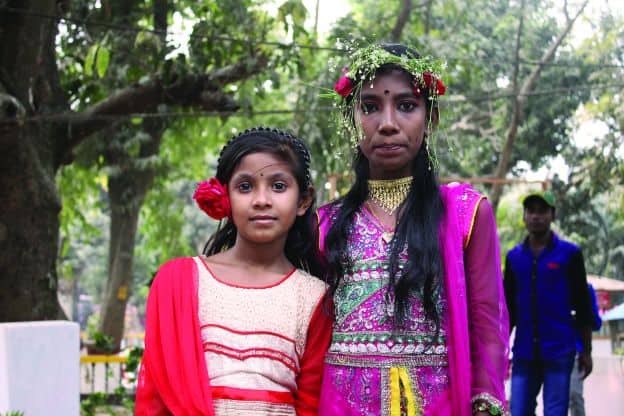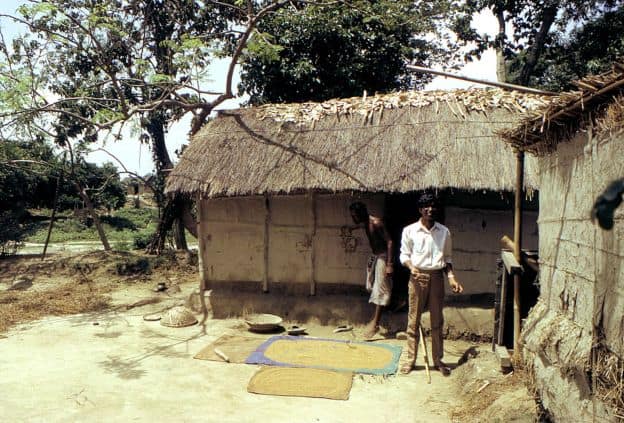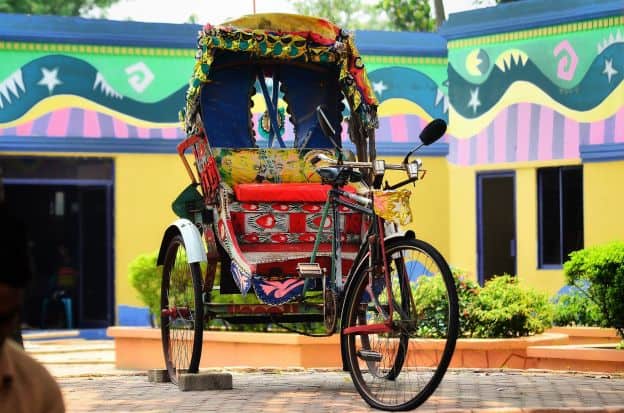Pop quiz: What are the ten most spoken languages in the world?
If you had to name them—without Googling, consulting the Oracle at Wikipedia, or conferring with Siri—what would be on your list?
Chinese, definitely. English, almost certainly. You might think Arabic or Hindi. Spanish would probably be high on the list.
You’d be right on all counts.
But you’d be forgetting the language of over 228 million people: Bengali.
Learn the Bengali language with our comprehensive guide, exploring grammar, vocabulary, and tips on getting started perfect for beginners and advanced learners.
About the Bengali Language
Bengali ranks among the top ten most spoken languages in the world. Known to its native speakers as Bangla, it’s the only national and official language of Bangladesh, where ethnic Bengali peoples comprise 98% of the population.
In India, it’s also spoken in the West Bengal state, as well as the states of Tripura and Assam. Among state-recognized regional languages in India, only Hindi has more speakers than Bengali. India’s national anthem, “Jana Gana Mana,” was originally written in Bengali.
About 85% of the people in West Bengal speak Bengali. Bengali plays an important role in Kolkata, the capital city of West Bengal. Even so, only a little over half of Kolkata’s population speaks Bengali. Hindi and English—India’s two official languages—dominate in that city.

There are some dialectical differences between the Bengali of India and that of Bangladesh. The Bengali of West Bengal is called “Western”; Bengali as it’s spoken in Bangladesh is the “Eastern” standard.
Aside from variations in spelling and diction, pronunciation differences clearly distinguish the two forms. Bengali speakers can revert to a more formal, neutrally-accented register of the language to be better understood by speakers from other regions.
Outside of India and Bangladesh, Bengali is spoken by immigrant populations in Europe, North America, the Middle East, and Asia. There are over 6.5 million Bangladeshis living outside of the Indian subcontinent. These immigrants, part of the Bangladeshi diaspora, live in countries as diverse as Malaysia and Germany, Saudi Arabia, and the United States.
How to Learn Bengali
According to the U.S. Department of State’s Foreign Service Institute, Bengali is considered a Class III language…meaning that it has “significant linguistic and/or cultural differences from English.”
One major difference is word order. Bengali places its verbs either at or near the end of sentences. In English, verbs are usually somewhere in the middle—following the subject, and before the object.
In addition, verb negations go after the verb in Bengali. For example, to use Bengali-style word order in English, we’d say something like, “We this sentence understand not.” While this seems very odd at first, you can still figure out the meaning because you know all the words in the sentence. Even though the words appear jumbled up at first glance, you can still use logic and context to make sense of them.

Bengali, although different from English in many ways, also has the advantage of being a largely genderless language. Many English speakers trip over the concept of noun genders when studying languages such as French, Spanish, or German. Bengali has no concept of masculine, feminine, or neuter nouns, so you won’t have to worry about this issue. You also won’t have to learn adjective-noun gender agreement.
Unlike English, however, Bengali masculine and feminine pronouns are often the same. For example, the possessive pronouns for his and for her are the same word in Bengali. This is also true for he and she—although, interestingly, the Bengali words for him and her are different from each other.
Whatever differences Bengali may have compared to English, all human languages express certain universal concepts. Focus more on the concepts you’re trying to communicate and less on how “odd” the new language might sound to your ears.
With motivation and dedication, along with help from varied resources, you can certainly achieve a level of fluency in Bengali.
Expose yourself to the Bengali language in many contexts. Look at the letters. Regularly listen to the sounds, in speech and in music, even if you don’t understand them all yet. If you can think of Bengali not as strange or foreign, but simply as part of the normal way you express yourself, you will have overcome one of the biggest mental hurdles in language learning.
Learning Bengali requires commitment, consistency, and follow-through. However, it should also be fun.
The brain simply works better when you’re relaxed. Stress can short-circuit memory.
As long as you stay motivated, you will naturally process and remember new Bengali words and concepts more effectively when you’re enjoying the learning process.
Lean on Loan Words
Even if you haven’t started studying Bengali yet, you may recognize more words than you’d expect.
Bungalow, dinghy, jute, and tom-tom are notable examples of Bengali loan words. While Bengali has not imported very many words into English, several basic Bengali words are English-language imports.

Hungry? You might sit down in a cheyar at a ṭebil for a meal. On top of the ṭebil, you’ll find a glas of water and a kap of tea.
What if you don’t feel well? You could go to the haspatal to see a ḍaktar.
Once you graduate from skul in Bangladesh, you might continue your studies in Kolēj.
If you get sick of working at an ofish, you might decide to find an alternative income source by robbing a bank. Of course, if the pulish catch you, you’ll wind up in jel…wishing you had stayed in your cubicle at the ofish.
Bengali also has loan words from languages as diverse as Arabic, Portuguese, French, and Japanese. If you’re familiar with some of these other languages, you may spot several more loan words and cognates.
Just look out for false cognates, which are sometimes known as “false friends.” These are words that look and even sound the same as a word you know in English—but don’t mean the same thing at all.
Every language learner has an embarrassing story about desperately grabbing onto a false cognate in the midst of conversation, only to find out the hard way that the familiar-sounding word didn’t mean what they’d hoped. (Take it from someone who once asked for a recette (recipe) as proof of purchase during a French conversation!)
Don’t let these incidents sap your confidence, even if they’re cringeworthy. The awkward moment that ensues will make you determined to find the correct Bengali word, and forever cement it into your memory.
Journaling
Keeping a language journal can help you stay motivated and keep your Bengali studies on track. Important journal sections could include learning goals, grammar tips, a running list of the words you’ve learned, and tables of related words.
One section can be a diary you keep in Bengali, to the best of your ability. Sure, you might only be able to say simple things at first, like “Hello” or “Today is Monday.” Over time, though, you’ll have a visible record of how your knowledge of Bengali is growing.

Periodically review your older entries. This practice serves several purposes: It reminds you of words or concepts you may have forgotten, it helps you compare your goals to your progress, and it boosts your morale when you realize that you’ve learned more Bengali than you think.
Journaling about your Bengali learning journey shouldn’t be a chore. Personalize the journal to your liking. Add images like pictures of the Bangladeshi countryside or street signs in Dhaka. Keep it colorful and make it a pleasure to use.
Structured Lessons
Especially when you first start learning Bengali, following the roadmap of structured language lessons can keep you grounded and lay a firm foundation for future learning.
There are many options for taking Bengali lessons. You might find them at a local community college or online. Several apps give you Bengali lessons on the go, usually in a less formal way than a traditional classroom curriculum.
We’ll look into several options for Bengali courses and apps, as well as more immersive multimedia formats such as video lessons.
Multimedia Immersion
One way to familiarize yourself with the language is to partake in different types of media. From books to podcasts, movies to music, we’ll look at several entertaining and informative sources for Bengali language exposure.
Although several of these modalities can be considered passive learning—particularly audio and video recordings, which are not interactive by nature—you can become a more active listener or viewer by repeating phrases or taking notes as you listen and watch.
If you keep your ears open, repeated exposure to native Bengali speakers will attune you to the correct sounds of the language. Watching the expressions of speakers in videos will give you visual clues about the connotations of different words and expressions.
Bengali Conversation
An essential part of learning any language is practicing conversation. By participating in Bengali conversations, you’ll strengthen your listening skills and gain confidence in expressing yourself in the language.
Admittedly, conversation can be one of the most intimidating parts about studying a language. Whether you’re a complete beginner or moving into the intermediate phase of learning, you’ll often feel unsure about your mastery of the language. You might feel like you’re leaving yourself open to ridicule by saying the wrong thing or speaking poorly.
However, if you want to become fluent in Bengali, there really is no substitute for speaking the language with others. Hours spent memorizing vocabulary, mastering grammar rules, or repeating phrases aloud to yourself can only prepare you so much.

It may feel like diving into the deep end of the pool without a life preserver when you barely know how to swim, but it’s crucial to take the plunge into conversation. Fortunately, there are resources for people to practice their newfound Bengali skills in a controlled environment. We’ll explore several options for finding conversation partners who will support your learning goals.
Bengali Books
Once you’ve mastered the Bengali alphabet and started to build your storehouse of vocabulary, consider practicing your reading skills with Bengali books.
Start small with children’s books. Language Lizard specializes in bilingual books for young learners. With over seventy Bengali-English selections, you can choose from all sorts of adventures and legendary tales. Many are stories from around the world, such as Pied Piper (Germany), Three Billy Goats Gruff (Norway), and The Children of Lir (Ireland).
The bilingual text will save you from reaching for the dictionary when you stumble over a word in Bengali; as you learn more, you can cover over the English-language portion of the page to test yourself.
Textbooks can help you make the transition from Bengali novice to mid-level learner. Here are a few choices to get you started.

Colloquial Bengali: The Complete Course for Beginners focuses mainly on conversation. The book introduces you to the Bengali language, explores some of its characteristics, and then thoroughly explains the sounds of the language. Through the online audio tie-ins, indicated by a headphones icon, you can hear the spoken language.
Unlike some learning methods, Colloquial Bengali teaches you the phonetic representations of Bengali words first, then progresses to Bengali script. The book also contains dialogues and vocab lists, which revert to using phoneticized versions of the Latin alphabet. However, the book includes a glossary that matches the phonetic versions of words to the Bengali script, as well as the English translations.
When you want to move on to intermediate and advanced textbooks, you can take advantage of some free online resources. The Bangla Books PDF site offers free textbooks from Bangladesh’s National Curriculum and Textbook Board. You can read these PDFs online in your browser or download them for offline use. They cover many topics, such as science, mathematics, religion, and global studies.
BD eBooks hosts a collection of Bengali books in many genres, including novels, horror, sci-fi, information technology, and history. Bengali translations of books from other languages, such as Plato’s Republic, C.S. Lewis’s Chronicles of Narnia, and Jules Verne’s The Adventures of Captain Hatteras (Voyages et aventures du capitaine Hatteras), are also available. These no-cost ebooks can be read online or downloaded as PDFs.
Is Bengali Hard to Learn?
Although Bengali may pose some challenges for learners, it is not considered one of the most difficult languages to learn.
Bengali has its own script, which might be challenging for learners unfamiliar with non-Latin scripts. The pronunciation can also be tricky, with distinct sounds that may not exist in some other languages.
Bengali grammar is complex, but it is not considered excessively difficult. Like many languages, it has its own set of rules and structures that learners need to grasp. Bengali is a Subject-Object-Verb (SOV) language, which means the typical word order is different from Subject-Verb-Object (SVO) languages like English. Adjusting to this structure might take some time for learners.
What’s the Best Way to Learn Bengali?
Bengali is not a common language to learn, which means resources are few and far between. So take advantage of language learning apps like Babbel or Memrise which provide interactive lessons, vocabulary practice, and structured learning paths.
You should also surround yourself with the language as much as possible. Listen to Bengali music, watch movies or TV shows, and follow Bengali speakers on social media. Immersion helps improve your listening and comprehension skills.
How Long Does It Take to Learn Bengali?
According to the Foreign Language Institute (FSI), it takes around 1100 hours to achieve fluency in Bengali. If you were to study Bengali for 8 hours per day, 5 days per week it would take you approximately 7 months to go from A0 (ab initio) to C1 (fluent speaker).
Of course, the time it takes to learn Bengali varies widely depending on several factors such as your native language (if your native language is related to Bengali or shares similarities with it, you might find it easier to learn) and your previous language learning experience ( if you have experience learning other languages, especially languages from the same language family, you may find it easier to grasp certain language concepts and structures.)
How to Learn Bengali Fast
Master the Basics
Start with the basics of the Bengali alphabet, common phrases, and basic grammar rules. Keep going over those until you know them really well because they will be the foundation for the rest of your learning.
Practice Regularly
Consistency is key. Dedicate a specific amount of time each day to practice Bengali. Regular practice helps reinforce what you’ve learned and builds a strong foundation.
Immerse Yourself
Surround yourself with the language as much as possible. Listen to Bengali music, watch movies or TV shows, and follow Bengali speakers on social media. Immerse yourself in the language to improve your listening and comprehension skills.
Be Patient and Persistent
Language learning is a gradual process. Celebrate small victories, and don’t be discouraged by challenges. Stay patient and persistent in your efforts.
Additional Bengali Learning Aids
Beyond lessons, courses, books, and apps, you’ll find numerous other tools for learning Bengali. Mix them up to spice up your Bengali learning experience and expose yourself to the language used in different registers and contexts.
Flashcards
One tried-and-true method for reviewing vocabulary is using flashcards. Apps like Memrise and Anki offer free access to a virtual flashcard system that can help you develop core vocabulary.
Anki is a customizable flashcard wizard that can handle multiple character sets and even images, making it a fantastic tool for creating your own Bengali flashcards.
Language Games
The Master Any Language site features word-matching games in categories such as days of the week, animals, foods, family, adjectives, and common phrases. There are also flashcards, tests, and other resources to help you learn basic Bengali.
Some words are paired with sound clips; you can also run the games in silent mode. In a few cases, the Bengali words will be written only in the Latin alphabet (transliterated), although they’re usually written in both Bengali script and the Latin phonetic version. There’s a limited amount of vocabulary for each category, but it can be helpful for beginners who want to master simple words and phrases.

Radio Stations: Music & Talk
Radio streaming site Live Online Radio conveniently aggregates several Bengali stations. All it takes is a simple click to start livestreaming Bengali broadcasts.
Privately owned Radio Bhumi runs 24/7. In addition to adult contemporary music, Radio Bhumi broadcasts news and sports programs. Its cricket coverage is well-appreciated by listeners. According to the station’s website, part of the station’s mission is to “introduce the roots of Bengali culture and songs properly,” and to “present standard Bengali language correctly.”
This might make it a particularly good resource for learners at a beginning-to-intermediate level.
Radio Foorti takes you from Golden Oldies to Hip-Hop and New Age. For pop music and the paranormal all on one convenient frequency, check out Radio Foorti’s popular show, Bhoot FM.
Youth-oriented Jago FM has pop hits and a line-up of programs such as early-morning Hi Dhaka, afternoon show Daily Dose, and ghostly late-night offering Bhoot Studio. Its broadcast hours are limited, however.
Dhaka FM broadcasts adult contemporary and pop with a traditional Bengali twist. Beyond music, the station offers some talk programs like Wake Up Bangladesh.
Bangla Radio: Indian Style.
If you’re looking for Bengali more as it’s spoken and sung in India, check out the variety of Bengali stations on the OnlineRadioFM.in website. If you have trouble streaming any of the stations, you might try a different browser. (I couldn’t get streaming to work for these on the Google Chrome browser, but Mozilla Firefox and Microsoft Edge worked just fine.)
Music and talk radio are fantastic language-learning resources. Even the advertisements, which you might tune out while listening to programming in your native language, can give you insights into commonly used words and colloquial expressions…as well as glimpses into Bengali consumer culture.
Simply Music
If you’re not a fan of radio programs, Bengali music can also be found on sources like Last FM, categorized by artist and genre.
Indian music site Gaana lets you save favorite songs and compile personal playlists of Bengali music, although you’ll need to create an account before you can enter the site. (You can also use your Facebook or Google account credentials to log in.)
Music India Online makes it easy to search for Bengali music by genre, decade, album, artist, or mood. Go back to the 1940s for the musical nostalgia of yesteryear or listen to hits from the new millennium.

No matter what your motivation for learning Bengali or your learning goals, you’ll find that your knowledge of the language will be more well-rounded if you take advantage of multiple resources. Be patient with yourself as you learn.
Don’t overdo your studying; it’s better to do a short session every day than to cram for hours. Just keep studying consistently. Soon, you’ll be able to confidently say, “হ্যাঁ, আমি বাংলা বলতে পারি।” (“Yes, I can speak Bengali.”).


Michelle,
WOW, you’ve done your research, lady! I’ve never thought of studying Bengali, but your writing has stirred an interest in it for me.
Thank you for doing such a great job explaining different facets of the language and the resources to study it.
Dear Michelle, I am so happy to see your enriched resources about learning Bengali. I would like to thank you for adding my channel as a recommendation for learning Bengali. I am developing a new website for serious Bengali learners. The web site name is https://www.learnbengalifast.com, I will be so thankful if you add the website in this awesome content. Best of luck to you.